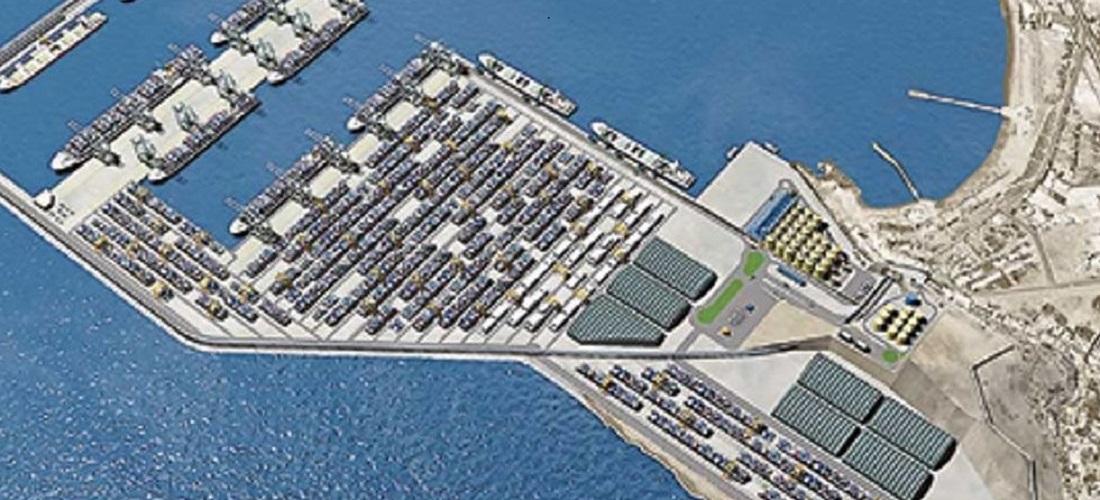
Chinese state-owned companies create base in South America with a US$3 billion port in Peru
May, 17, 2022 Posted by Gabriel MalheirosWeek 202220
Major ports along the west coast of the Americas have been disrupted for much of the past two years due to Covid-19 and global transportation challenges caused by factors such as the war in Ukraine.
Chinese state-owned conglomerate Cosco Shipping Holdings is forging its own solution to untangle this knot by building – virtually from scratch – a deep-water port in Peru. At the cost of US$ 3 billion, it will connect an industry and a logistics park in collaboration with a unit of the Swiss trading company Glencore.
Chancay, 55 kilometers from the capital Lima, north of the Pacific coast, has the hum of heavy Chinese machinery and the thud of underground explosions drowning out the sound of waves in the only new port development underway in the Americas.
Signs in Spanish and Chinese announce construction milestones and upcoming public works. Thousands of workers move around the 1,100-hectare site, pouring concrete, driving construction equipment, and breaking rocks.
China Railway Group is building a 1.8 km tunnel from the port area so that trucks heading to the 800-hectare industrial and logistics park can bypass Chancay city center.
Cosco operates in around 35 ports worldwide, but Chancay will be the conglomerate’s first outpost in South America.
“Cosco Shipping will cooperate with Peru to make the Port of Chancay into an important central port in Latin America,” President Xu Lirong said in 2019 when the company closed the deal to buy 60% of the Volcan unit project from Glencore for $225 million.
“The Port of Chancay is an important initiative to implement China’s Silk Road initiative in Peru,” he added.
Cosco is not facing this challenge alone. State-owned partner companies China Railway Group and China Communications Construction, especially its China Harbor Engineering unit, are leading the construction of the new port.
Under Cosco’s plan, the new port will be able to handle the world’s largest container ships and process up to 1 million standard containers a year, with the first quays opening within a year.
“The port is planned to grow, and we have room to continue expanding for 50 years,” said Gonzalo Rios, the port’s deputy general manager. “There’s no other project like it in size and construction technology today,” he said.
Peru’s main value to China as a trading partner is copper, a crucial input used in manufacturing and construction. However, while Chinese state-owned companies manage two of Peru’s biggest copper mines, their production is not expected to be shipped via Chancay. That’s because Cosco is prioritizing shipping infrastructure and agricultural commodities. Fishmeal is another major Chinese import from the country.
Peru’s container trade with China lags well behind neighboring Chile. Chile received 643,958 twenty-foot equivalent units (TEU) of containers last year from China, while it shipped 331,047, according to S&P Global Market Intelligence’s Panjiva data service. For Peru, 397,046 TEU entered, and 133,239 exited.
The port of Callao, on the outskirts of Lima, today the main commercial port in Peru and the busiest container center in South America, handled around 2.4 million TEU. The port unit of the Danish shipping company A.P. Moller-Maersk controls the north side of Callao. At the same time, Dubai terminal operator DP World manages the south, where it is investing $350 million to expand capacity.
Cosco is now behind Maersk on the trans-Pacific service to the west coast of South America. According to data released last year by research service BlueWater Reporting, the Danish group controlled 21% of capacity along the trade route. Cosco was tied in second with two other shipping lines at 14%.
However, the share of Cosco can be expected to grow once the company’s new port in Peru is up and running.
“This is a strategic development,” said Peter Sand, chief analyst at shipping data service Xeneta in Oslo (Norway). “If it goes according to the plans outlined, it will become a hub for Chinese container exports on the South American continent.”
“Some Chinese state investments have a different objective than classic commercial and financial success,” he added. “The objective is broader, strategic, and long-term.”
According to Omar Narrea, a management professor, Chancay would be a growth driver for Peru if the country is able to stimulate development in planned surrounding industrial parks that might take advantage of the new port and its location along the Pan American Highway. Lima’s Universidad del Pacifico offers infrastructure-focused public service.
Source: Valor Econômico
To read the full original article, please go to:
-
Ports and Terminals
Sep, 08, 2023
0
Definition of Santos’ STS10 terminal size and bidding model in concluding stages
-
Steel and Aluminium
Mar, 08, 2024
0
Brazil initiates investigation on exports of pre-painted steel from China
-
Other Cargo
Mar, 22, 2024
0
After steel, plastics sector opposes tax increase
-
Trade Regulations
Jun, 15, 2021
0
Import tax cut affects 15% of Brazilian capital goods imports, mainly benefitting China


